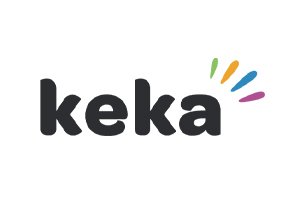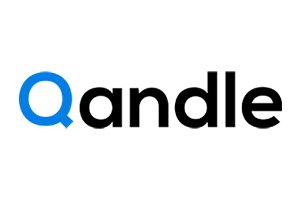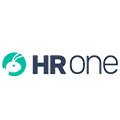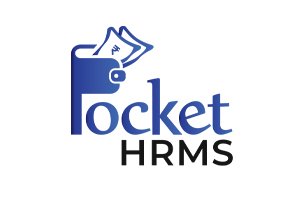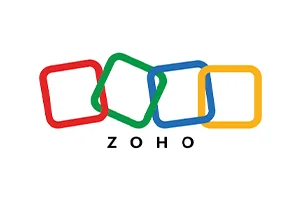Looking for the best HR software for your company in Delhi? We’re here to help! We’ve created a simple list of the top HR software for startups in India. With so many choices out there, we’ve handpicked the best ones to make your operations easier. Explore our list to compare features and pricing, and enjoy free consultations to find the perfect HR software for your needs. Let’s get started!
Get up to 25% OFF or One Month Free Trial on the best HR Software In India. Get your HR Software in India Now!
What are the benefits of HR Software
Fulfill all your needs by using most popular hr software in Delhi:
Increased Efficiency:
- Automate repetitive & time-consuming HR tasks, freeing up HR staff to focus on strategic initiatives.
Improved Data Accuracy:
- Eliminates the need for manual data entry, reducing the risk of errors caused by human intervention.
Streamlined communication:
- Allow HR staff to communicate with employees through one platform & share vital information in a tap.
Enhanced compliance:
- Comply with labor laws and regulations by automatically tracking & storing employee data and reduce in compliance risks.
Employee self-service:
- Provide employees with self-service portals to submit time-off requests, update personal details, and more.
Increased transparency:
- A centralized platform for storing HR data, making it easier for everyone to access/review vital information.
Which is the Best HR Software Providers in Delhi
Keka:
Keka HR is an all-in-one human resources management software that simplifies HR processes for all businesses. With it, you can manage payroll, recruit talent, onboard new employees, track performance, and track attendance. Its user-friendly interface makes it easy for HR departments and employees to navigate and access the tools they need. As well as self-service options, the platform promotes employee engagement and empowerment. Keka also offers robust reporting and analytics capabilities that enable businesses to make data-driven decisions about their workforce. With Keka HR, organizations can increase efficiency and improve employee experience.
Reviews: 4.7/5 Based on 158 Reviews
Pros:
Using Keka HR is simple and easy without a doubt. Despite its simplicity, the software is easy to use even for non-techies. Keka is also praised for its comprehensive features that cater to a variety of needs.”
The dashboard provides detailed information on HR techs, including logins and logouts, leaves, performance scores, and documentation.
In terms of UI and experience, both are very smooth and simple. It is easy to navigate between different sections. Also, the clock option provides insights into our login times.”
Cons:
Customer support is something that I think should be integrated into the product and is the missing component of the support function.”
“The login process could be improved. Entering a captcha daily might become frustrating in the long run.”
Qandle:
Qandle is a modern HR and payroll management system designed for businesses of all sizes. In addition to onboarding, attendance tracking, performance management, payroll processing, and recruitment, this software offers a comprehensive suite of tools. User experience is Qandle’s top priority, offering an intuitive interface that enables HR teams and employees to navigate the system effortlessly. Moreover, the platform offers self-service functionality so that employees can manage their profiles and requests themselves. Qandle also offers robust analytics and reporting capabilities to help organizations make informed workforce decisions. Using Qandle, you can increase employee engagement, compliance, and HR efficiency.
Reviews: 4.9/5 Based on 46 Reviews
Pros:
Easy-to-use tools that are well-organized and visually appealing. Using this tool has been easy, reports are easy to access, company metrics are easy to understand, and features are available to meet our business needs. Employees enjoy the product. Their research has resulted in a solution that meets all of my requirements.”
“Qandle HR Software sends me notifications about my attendance whenever I forget to clock out.”
“Dedicated account manager”
Cons:
“NONE. I cannot think of any cons. I love the product and will recommend it.”
“This one sends me notifications about my attendance whenever I forget to clock out.”
“The only thing missing on Qandle is an assessment tool, though external tests can be arranged through links.”
Spine HR Suite:
Spine HR is a human resource management software designed to simplify HR processes within organizations. There are a variety of features available, including payroll management, recruitment, employee onboarding, attendance tracking, performance evaluation, and compliance management. With the easy-to-use platform, employees can manage their information and requests quickly. Additionally, Spine HR offers analytics and reporting tools to help organizations gain insight into workforce trends. Spine HR’s mission is to improve business productivity and employee engagement by enhancing operational efficiencies and employee engagement.
Reviews: 4.4/5 Based on 136 Reviews
Pros:
“PayrollNx, HRMS mobile application, self-service Time module, leave application.”
“The process of the software for processing salary and creating different reports makes the software efficient.”
“Intuitive interface, comprehensive features, customizable reporting and analytics, integration capabilities”
Cons:
“We worked all modules, and as per my experience, all modules are working properly except the training module and recruitment module, which need to be improved a little bit.”
“As per the opinion, we can improve the recruitment module as there are many options we need to feel manual.”
“Intuitive interface, comprehensive features, customizable reporting and analytics, integration capabilities”
Wallet HR:
Wallet HR is your ideal platform to manage your HR functions especially to streamline your employee lifecycle. Our application has grown significantly over the years to meet the ever-changing demands of customers, and industry trends which have made us the best payroll management software in India. Our software consists of several modules like onboarding, core HR payroll activities, attendance and leave management, performance management system, offboarding, and more We extend our service in the cities like Chennai, Hyderabad, Bangalore, Coimbatore, NCR, Mumbai, Pune and countries including Kenya, UAE, Tanzania, and Ghana as well.
Pros:
User-Friendly Interface: Wallet HR typically offers an intuitive interface, making it easy for users to navigate and manage HR functions.
Centralized Data Management: It consolidates employee data, allowing for easier access and management of information.
Automated Processes: Features like automated payroll, leave management, and performance tracking can save time and reduce errors.
Mobile Accessibility: Many platforms provide mobile apps, allowing employees and HR managers to access information on the go.
Compliance and Reporting: Wallet HR often includes tools for compliance management and generating reports, which can simplify regulatory requirements.
Customizable Features: Organizations can often tailor the software to meet their specific needs, which can enhance usability.
Cons:
Cost: Depending on the pricing model, it can be expensive for smaller businesses or startups.
Learning Curve: While user-friendly, there may still be a learning curve for some users, especially those not familiar with HR software.
Integration Issues: There may be challenges in integrating Wallet HR with existing systems or third-party applications.
Limited Customer Support: Some users report difficulties in accessing timely support or troubleshooting assistance.
Data Security Concerns: As with any digital platform, there may be concerns about data security and privacy.
Dependence on Internet Connectivity: Being cloud-based, consistent internet access is necessary for full functionality.
Reviews: 4.6/5 Based on 187 Reviews
HROne:
HROne is comprehensive HR management software designed to streamline various human resource functions for organizations of all sizes. The software includes payroll processing, recruitment, onboarding, attendance tracking, performance management, and employee self-service. HROne emphasizes user experience with an intuitive interface, making it easy for HR teams and employees to navigate the platform. Additionally, the software provides analytics and reporting tools that help businesses make data-driven decisions about their workforce. The HROne platform aims to simplify HR processes and enhance operational efficiency, enabling organizations to effectively manage human resources.
Pros:
User-Friendly Interface: HROne is often praised for its intuitive design, making it accessible for users of all skill levels.
Comprehensive Features: It typically includes modules for recruitment, onboarding, payroll, performance management, and more, allowing for end-to-end HR management.
Customization: Many users appreciate the ability to customize the software to fit their specific HR processes and organizational needs.
Automation: HROne automates repetitive tasks, reducing administrative burdens and increasing efficiency for HR teams.
Reporting and Analytics: The software usually offers robust reporting tools, enabling organizations to track metrics and make data-driven decisions.
Support and Training: Users often report good customer support and training resources, which can help teams get the most out of the software.
Cons:
Cost: Depending on the features and scale of implementation, HROne can be relatively expensive, particularly for smaller businesses.
Complexity: While user-friendly, some users may find the breadth of features overwhelming, particularly during initial setup.
Integration Challenges: There might be issues when integrating HROne with existing systems or third-party applications.
Updates and Bugs: Some users have reported occasional bugs or issues following software updates, which can disrupt workflows.
Learning Curve: Even with a user-friendly design, there can still be a learning curve for new users, especially for those unfamiliar with HR software.
Limited Mobile Functionality: Some users may find that the mobile app or mobile-friendly features are not as robust as the desktop version.
Pocket HRMS:
A pocket HRMS helps organizations of all sizes simplify human resource management processes. It offers a variety of features, such as payroll management, attendance tracking, leave management, recruitment, and performance appraisal. Employees can access their information and manage requests using the platform’s intuitive mobile app. Self-service functionality includes self-updating and tracking of employees’ performance in the Pocket HRMS. It also provides analytics and reporting tools to assist HR teams in making informed decisions. Using Pocket HRMS, HR operations can be streamlined, engagement can be improved, and efficiency can be enhanced.
Pros:
User-Friendly Interface: Pocket HRMS often features an intuitive design, making it easy for HR teams and employees to navigate.
Mobile Accessibility: The software is designed for mobile use, allowing employees to access HR functions on the go, which is especially useful for remote teams.
Comprehensive Features: It typically includes modules for attendance tracking, payroll management, recruitment, performance appraisal, and more, providing a holistic HR solution.
Automation: Pocket HRMS automates many routine tasks, such as leave management and payroll processing, freeing up time for HR staff.
Customizable Workflows: Users can often tailor workflows to fit their specific HR processes and organizational structure.
Cost-Effective: It is generally considered a cost-effective solution for small to medium-sized businesses compared to some competitors.
Cons:
Limited Advanced Features: Some users feel that while it covers basic HR needs well, it may lack advanced features that larger organizations require.
Integration Limitations: There may be challenges when integrating Pocket HRMS with other software systems, which can affect data flow and accessibility.
Customer Support Issues: Some users have reported inconsistent customer support experiences, particularly during peak times.
Learning Curve: Although user-friendly, new users may still experience a learning curve, especially when navigating all available features.
Performance Issues: Some users have reported occasional slowdowns or performance issues, particularly during high-traffic times.
Reporting Functionality: While it offers reporting features, some users may find them less comprehensive compared to more established HR systems.
Zoho Payroll:
Using Zoho People, companies can streamline HR processes using cloud-based HR software. It includes features like employee onboarding, attendance management, performance appraisals, leave management, and payroll integration. Using Zoho People, HR teams and employees can easily access information and manage tasks. In addition, the platform also allows employees to update their profiles and submit requests independently. In addition, Zoho People offers analytics and reporting tools to help organizations understand workforce trends. By improving employee engagement and operational efficiency, Zoho People strives to enhance businesses’ efficiency.
Pros:
Integration with Zoho Ecosystem: If you’re already using other Zoho products, Zoho Payroll integrates seamlessly with them, providing a unified experience.
User-Friendly Interface: Many users find the interface intuitive and easy to navigate, reducing the learning curve.
Comprehensive Payroll Features: It offers features like automatic tax calculations, compliance management, direct deposit, and payslip generation.
Customization: Users can customize payroll processes to suit their specific organizational needs, including various pay structures and deductions.
Mobile Accessibility: The mobile app allows employees to view payslips and access payroll information on the go.
Cost-Effective: Generally, Zoho Payroll is considered affordable, especially for small to medium-sized businesses.
Cons:
Limited Advanced Features: Some users feel that it may lack more advanced HR features found in dedicated HR management systems.
Integration with Non-Zoho Products: While it integrates well within the Zoho ecosystem, connecting with third-party applications can sometimes be challenging.
Support Issues: Users have reported mixed experiences with customer support, especially during peak usage periods.
Learning Curve for New Users: Although user-friendly, new users may still require some time to familiarize themselves with the system’s functionalities.
Regional Limitations: Depending on the country, certain payroll features or compliance options may be limited, affecting usability for international businesses.
Reporting Limitations: Some users find the reporting features less robust than they would like, potentially hindering data analysis.
The Top 5 Free HR management software:
Zoho People: Offers a free plan for up to five employees. It includes features like leave management, employee self-service, and performance appraisal.
Freshteam: Provides a free plan for up to 50 employees. It includes applicant tracking, onboarding, and basic HR management features.
Cascades: A simple HR software solution that offers a free version for small teams, focusing on performance management and goal tracking.
Bitrix24: Offers a free tier for small teams, including HR management tools, time tracking, and task management.
HR.my: An open-source HR management system that allows for customization and includes features like time tracking, leave management, and payroll.
OrangeHRM: An open-source HR software that can be self-hosted. It has basic HR functionalities like employee management and leave tracking.


